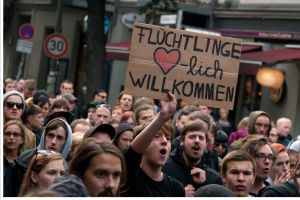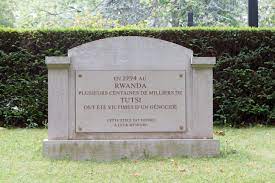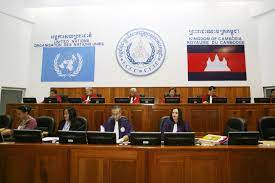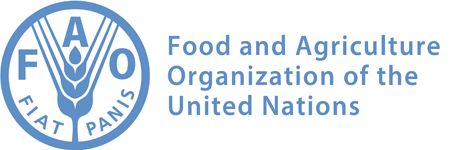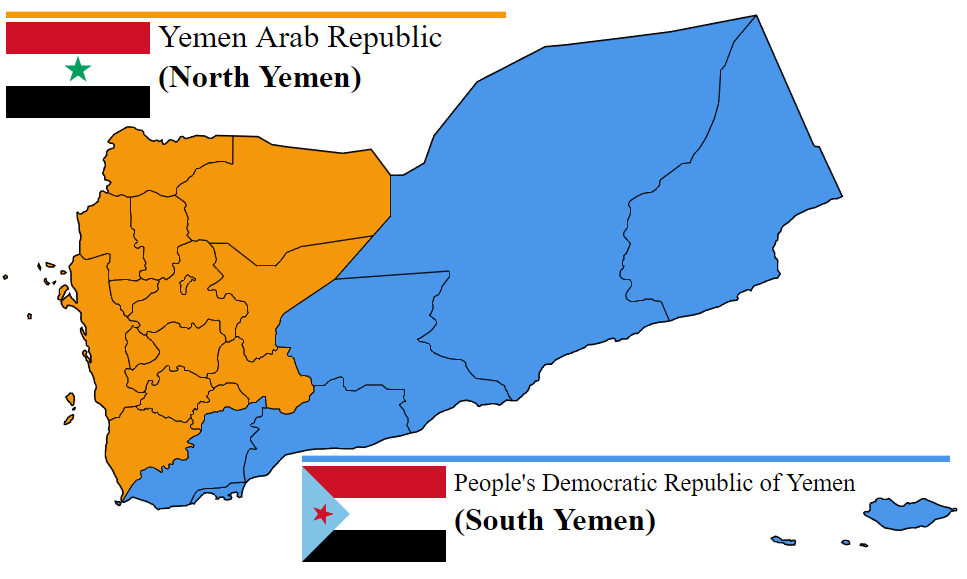Par Bernard J. Henry
Deux ans déjà, deux ans d’une guerre mondiale qui semble interminable, une Troisième Guerre Mondiale non entre deux ou plusieurs alliances d’Etats souverains, ou contre un envahisseur extraterrestre comme dans certains films ou séries de science-fiction, mais contre un virus – un coronavirus, le SARS-CoV-2 responsable de la COronaVIrus Disease of 2019 ou Covid-19. Après la souche originelle dite de Wuhan, le monde a découvert les variants, d’abord affublés de gentilés (anglais, sud-africain, indien) puis renommés selon l’alphabet grec : Alpha, Beta, Delta … Et maintenant Omicron.
La lutte progresse mais la pandémie sait contre-attaquer, comme avec Omicron. Hélas, l’inégalité vaccinale entre pays et régions du monde, couplée aux décisions scientifiquement absurdes de certains gouvernements, se fait pour le virus une alliée inespérée.
L’histoire nous l’enseigne, lorsqu’une crise mondiale éclate et se prolonge, ce n’est pas après qu’elle a pris fin qu’il faut envisager l’avenir, mais pendant même qu’elle se produit, et faire de ses projets son but réel de guerre. L’histoire nous l’enseigne, oui, et l’an prochain verra le quatre-vingtième anniversaire des Nations Unies, non pas de l’organisation internationale créée en 1945 à San Francisco – également berceau de l’Association of World Citizens (AWC) – mais de l’alliance militaire des pays combattant l’Allemagne nazie, l’Italie fasciste et le Japon. Une alliance militaire qui avait retenu les leçons de l’échec de la Société des Nations et compris, à l’avenant, qu’un combat armé ne vaut rien s’il n’est porteur d’un projet politique pour un monde en paix, donc, un monde plus uni.
Un monde plus uni … Que certains partis politiques ici ou là le veuillent ou non, c’est ce que produira inéluctablement cette pandémie, après une épreuve dont aucun continent sur terre n’aura été épargné. Et même si cela dérange ces partis xénophobes de divers pays et continents, là encore, ce monde ne pourra plus regarder de la même manière le sujet dont ils ont fait leur fonds de commerce pendant le demi-siècle écoulé – la migration.
La forteresse WENA
Si c’est littéralement le monde entier qui est touché, tout comme par la Covid-19, par le virus de la xénophobie qu’aucun vaccin ne vient enrayer, le centre mondial de l’épidémie est bien la WENA (Western Europe and North America, Europe occidentale et Amérique du Nord). Depuis le début du siècle, avec des entrées au gouvernement en Autriche et en Italie notamment, ainsi qu’une présence au second tour de l’élection présidentielle en France et un résultat électoral sans précédent aux Pays-Bas, l’extrême droite xénophobe n’a cessé de croître en WENA, jusqu’à fusionner au Canada avec la droite traditionnelle incarnée par le Parti conservateur. Mais, après des reflux ici et là, l’année 2015 est venue lui ouvrir grand les portes jusqu’alors closes du pouvoir.
Après ce que d’aucuns appelaient la «crise migratoire» de l’été, lorsque migrants et réfugiés avaient eu l’impudence de venir déranger la baignade et la bronzette des Européens en accostant sur la rive sud de la Méditerranée, un exode vite réduit par certains à une attaque envers l’Occident de Daesh, le soi-disant «État islamique en Irak et en Syrie» qui avait déjà en janvier fait couler le sang à Paris, la Grande-Bretagne suivit sans mal l’année suivante un UKIP déchaîné contre des hordes d’envahisseurs vers le vote du Brexit. A des milliers de kilomètres de là, loin des rivages du désespoir, un Donald Trump donné perdant d’avance remporta contre toute attente la Maison Blanche en évoquant, entre autres, un mur géant le long de la frontière mexicaine censé bloquer toute immigration clandestine. En 2017, bien que largement vaincue en fin de compte, l’extrême droite française atteignit une nouvelle fois les marches de l’Élysée. En 2018, les électeurs italiens consacrèrent Matteo Salvini. Il ne suffisait plus d’une «forteresse Europe», le temps était venu d’une «forteresse WENA», à bâtir du plus ironiquement sur des plans fournis par Moscou, où le pouvoir inspire et parfois finance les partis d’extrême droite comme de gauche radicale, antagonistes mais unanimes pour saper la démocratie libérale.

Ils savent ce qui leur fait peur, les tenants de la forteresse WENA. Ils le désignent par deux mots – le grand remplacement, celui d’une population européenne blanche et chrétienne qui n’existe que dans leur imaginaire par des hordes d’Arabes et d’Africains musulmans. Leur imaginaire où trône Le Camp des Saints, roman publié en 1973 par Jean Raspail et qui, en écho à l’antisémitisme délirant des Turner Diaries adulés par les suprémacistes blancs des Etats-Unis, décrit la chute de l’Occident blanc devant une invasion venue des pays du Sud. Loin d’avoir été oublié avec le temps, Le Camp des Saints inspire encore aujourd’hui l’extrême droite française ainsi que des proches de Donald Trump.
Personne au sud ne prône un «grand remplacement», concept qui n’existe donc qu’en WENA. Et pour cause, il ne pouvait venir d’ailleurs. S’il est une région au monde dont les pays ont, dans le passé, débarqué de force sur des rivages lointains, usé de la force pour imposer leur présence puis, in fine, leurs institutions, leur religion et leur culture, ce sont bien ceux de la WENA à travers le colonialisme, imités plus tard, tragique ironie, par l’URSS «anticolonialiste» sous couvert de soutien idéologique et pour les pires effets, dont deux en Afghanistan ayant pour noms les Talibans et Al-Qaïda.
Il n’y a qu’eux qui y pensent, eux pour qui la relation avec l’autre n’est que haine ou mépris, et pour certains, violence et guerre où l’on ne peut être que vainqueur ou vaincu. Dans leur immense majorité, celles et ceux qui, au sud, veulent gagner la WENA y recherchent tout au contraire son mode de vie, ses opportunités de travail et de construction d’une vie nouvelle, ses libertés que leur refusent les gouvernements de leurs pays d’origine, se servant la plupart du temps de la culture traditionnelle locale comme d’un alibi et nourrissant ainsi les fantasmes des xénophobes en WENA, trop contents de prendre en tenaille des migrants et réfugiés déjà pourchassés par leurs propres gouvernants.

La WENA a peur. Elle a peur de tous ces gens qui voient en elle un exemple pour leurs propres dirigeants, peur de toutes ces victimes qui l’appellent à agir pour leur permettre de vivre en paix chez eux ou, si elle s’y refuse, à les admettre au moins sur son territoire. Elle a peur aussi de ses propres enfants, ceux dont les parents sont eux-mêmes venus d’ailleurs ou dont les ancêtres plus lointains y ont été amenés de force, notamment comme esclaves. Elle a peur des Black Lives Matter et autres mouvements exigeant la justice pour qui, né ou élevé dans la WENA, s’y voit rejeté car porteur de cet ailleurs qui la tétanise.
Ses dirigeants ont peur, et ceux qui voudraient l’être aussi. Délogé de la présidence américaine, Donald Trump ne désarme pas. En France, terre de l’adoption de la Déclaration universelle des Droits de l’Homme en 1948, l’extrême droite se dédouble en deux partis rivalisant de peur et de haine d’autrui, tandis que le parti héritier de celui du Général de Gaulle parle arrêt de l’immigration et sortie de la Cour européenne des Droits de l’Homme, même la gauche se laissant tenter par la facilité xénophobe en s’en prenant par exemple aux transferts d’argent de travailleurs migrants vers leurs familles au pays.
Mise à mal par l’exemple russe de la démocratie illibérale de pure façade et celui de l’autoritarisme de marché donné par la Chine, la WENA n’est plus, elle le sait, maîtresse du monde. Devenir la forteresse WENA ne résoudra pourtant, pour elle, aucun problème. Fantasmer n’est pas empêcher les difficultés, encore moins les surmonter mais bien les rendre hors de contrôle. A travers le monde entier, migration et recherche d’asile génèrent des drames sans lien avec les peurs irraisonnées des opinions occidentales. La WENA peut bien rêver d’isolement, mais tout comme ceux que crée la Covid-19, les drames de la migration ont aboli les frontières et uni le monde – pour le pire.
Le monde uni en fait refuse de l’être en droit
Déjà tourmentée par ses cauchemars de « grand remplacement » et les capitulations de ses démocrates supposés devant les vrais populistes, la WENA tente l’impossible en s’obstinant à séparer strictement les migrants, en quête d’une vie meilleure, et les réfugiés, qui fuient une persécution potentiellement mortelle. Il est pourtant de moins en moins possible de chercher une vie meilleure sans fuir aussi une certaine forme d’oppression, même en filigrane, là où un réfugié peut certes avoir dû laisser derrière lui une vie confortable mais à laquelle a mis fin une soudaine et brutale menace. Et le mouvement des demandeurs d’asile s’exerce toujours bien davantage vers la WENA qu’à partir d’elle … Mais qui érige la peur en système s’en soucie bien peu. Tant pis pour les tragédies qui en sortent et tant pis pour le mauvais exemple ainsi envoyé au reste du monde, qui ne le reçoit que trop clairement.
Toute cette année, l’AWC n’a pu que le constater en intervenant sur des situations où les frontières des Etats ne s’ouvrent que pour laisser entrer l’oppression venue d’ailleurs. Entre la Pologne, Etat membre de l’Union européenne (UE), et le Belarus sous la tyrannie d’Aleksandr Loukachenko, des migrants et réfugiés venus du Moyen-Orient sont bloqués hors du monde, utilisés par Minsk tels des pions contre l’UE et refoulés par Varsovie qui craint un afflux si elle laisse entrer un petit groupe de personnes. A l’intérieur de l’UE même, le Danemark où l’extrême droite inquiète un gouvernement social-démocrate restreint encore ses lois sur l’asile et ordonne aux réfugiés de Syrie de rentrer chez eux, comme si la fin des combats actifs dans certaines régions du pays rendait plus sûr, et meilleur, le régime tyrannique de Bachar el-Assad. Et c’est à toute l’UE que se pose, comme au monde entier, la question de l’accueil des réfugiés d’Afghanistan depuis le retour au pouvoir le 15 août dernier de la milice islamiste des Talibans, dont la première cible est depuis un quart de siècle toujours la même – les femmes, premières à devoir fuir et premières à chercher asile.
Cherchant toujours plus à fermer ses frontières à qui veut y entrer, la WENA n’a en revanche aucun état d’âme à les ouvrir grand pour en faire sortir l’inspiration du refus de l’autre. Et ça marche.
En Amérique latine où se produit la deuxième plus grave crise de demandeurs d’asile au monde, celle du Venezuela où quiconque le peut fuit la dictature de Nicolas Maduro soutenue par Moscou, le Pérou qui accueille le plus grand nombre d’exilés vénézuéliens refuse aux enfants son statut de «Migration Humanitaire», plongeant donc des mineurs déjà déracinés dans une invivable inexistence officielle. En Égypte, où déjà sévit une répression intense, des réfugiés de conflits africains comme celui de l’Érythrée se voient, en dépit de l’évidence même, déboutés de leurs demandes d’asile et placés dans l’expectative d’un rapatriement forcé à tout moment. En Russie, une réfugiée d’Ouzbékistan privée d’un jour à l’autre de son statut après avoir dénoncé les manquements de Moscou à ses obligations en la matière a fini sa course en détention dans un aéroport, «hors du monde», comme emmurée «dans la prison des frontières», selon la Complainte du Partisan, l’autre chant de la Résistance française pendant la Seconde Guerre Mondiale.
Qu’attendre d’autre d’un monde qui s’entête à ne pas comprendre que, bien que composé d’États souverains, il est désormais uni dans l’épreuve et doit donc le devenir aussi pour la vaincre ? Un monde uni de fait qui refuse de l’être de droit, ce n’est pas nouveau dans l’histoire et on en sait les conséquences. En 1914, c’est un monde où l’Europe faisait la loi mais où une forme de mondialisation, économique et technologique, existait déjà qui est entré en guerre, car sa politique était restée peu ou prou celle du Congrès de Vienne, là où les nations ayant vaincu l’Empire français de Napoléon Ier avaient décidé entre elles du sort des autres. Pour certains la Grande Guerre, pour d’autres «la der des der», le conflit mondial sorti d’un ordre international périmé allait certes engendrer la première organisation politique internationale de l’histoire, la Société des Nations, mais cette dernière allait s’avérer elle aussi en retard sur son temps, incapable d’arrêter les ambitions italiennes en Éthiopie puis celles plus dévastatrices et meurtrières encore d’Adolf Hitler et du Troisième Reich allemand. Ce n’est qu’en combattant le fléau d’un temps en son temps, en créant contre Hitler une alliance militaire prenant le nom de Nations Unies, que le monde libre allait réussir à vaincre le Reich génocidaire et créer une nouvelle organisation, celle que nous connaissons encore aujourd’hui – l’Organisation des Nations Unies.
Voir le passé avec l’œil du présent, l’historien le dira, il faut se l’interdire. Mais l’inverse n’est pas plus souhaitable, et de 1914, l’historien pourra le dire encore. Que conclure alors d’un monde qui, en proie à une pandémie qui a déchiré les frontières, s’y enferme comme en des murailles et se le voit enseigner par la région même qui, depuis la fin de la Seconde Guerre Mondiale, symbolisait la liberté ?
Qu’on le veuille ou non
Un monde sans frontières est aussi peu probable qu’un «grand remplacement» en WENA, peu probable et, pour nous, une fausse bonne idée. L’AWC défend depuis le départ une Citoyenneté Mondiale accessible à toutes et tous, acceptable par toutes et tous, fondée sur un principe simple mais qui semble si difficile à accepter : étant toutes et tous natifs et habitants de la planète Terre, il est du devoir de chacun(e) de la protéger ainsi que son peuple, notre peuple, l’humanité, et accepter cet état d’esprit est entrer dans une Citoyenneté Mondiale qui s’exerce en supplément de la citoyenneté nationale, non à la place, d’autant qu’il n’existe au niveau planétaire aucune structure reconnue par les États qui permette une telle substitution. Même la citoyenneté de l’UE n’est acquise que par la citoyenneté nationale de l’un de ses États membres, se vouloir citoyen(ne) de l’Union de manière directe et exclusive étant impossible.
Pour autant, et l’histoire ne va pas dans une direction autre, qu’est-ce qui oblige les frontières à s’ériger en remparts, a fortiori contre un ennemi inexistant et chimérique ? Au nom de quoi les États souverains devraient-ils être des citadelles ? Et surtout, comment exercer dans de telles conditions la moindre Citoyenneté Mondiale alors que le sort de toute la planète et toute l’humanité nous le commande ? C’est ce que l’AWC a toujours défendu et, aujourd’hui, ce que l’on pouvait refuser comme n’étant qu’un simple axiome de notre part est devenu, plus que jamais, un fait prouvé. Même si un autre enseignement de la Covid-19 est, hélas, que les faits prouvés peuvent n’être plus probants.
Négateurs du virus, promoteurs de thérapies inefficaces, d’aucuns auront rejeté l’évidence nue face au SARS-CoV-2. Chefs d’État ou de gouvernement, qu’ils se nomment Trump, Johnson ou Bolsonaro, ils auront tous fini par rencontrer ce virus qu’ils niaient ou minimisaient, finissant ainsi par prouver au contraire son existence et le besoin absolu de s’en protéger. D’autres poursuivent aujourd’hui le travail de sape de ces derniers, parfois en y laissant leur vie. Les faits prouvés peuvent n’être plus probants, mais Lénine le savait, «les faits sont têtus».
Ces politiques migratoires et ces injustices qui nous ont amenés à intervenir, nous ne les avons pas inventées. L’AWC n’a pas le temps, encore moins le goût, de fabriquer des problèmes, trop occupée qu’elle est à tenter de résoudre ceux dont elle vient à avoir connaissance. Une vision des frontières, de l’étranger et de la migration qui n’est plus adaptée à son temps, c’est un problème, majeur, que nous ne résoudrons jamais seuls et qui demande une implication littéralement universelle. D’autant qu’il n’est pas sans rencontrer l’autre problème majeur du moment, le coronavirus. Si ce n’est par la coupable méfiance vis-à-vis de traitements venus de l’extérieur et/ou par la tout aussi coupable négligence alimentant l’inégalité vaccinale entre nations, plusieurs fois dénoncée de concert par l’Organisation mondiale de la Santé et le Fonds monétaire international, comment expliquer l’apparition des variants Delta puis Omicron respectivement en Inde puis en Afrique du Sud ? On empêchera des êtres humains de quitter leur pays, on les empêchera d’entrer dans celui qu’ils espèrent atteindre, mais des gardes-frontières n’arrêtent pas un virus. Les frontières non plus, et voir en elles une solution soit à la migration tant redoutée soit à la Covid-19, c’est rendre impossible tant une migration ordonnée et humaine que la fin de la pandémie.
Un seul monde, ce n’est plus un slogan, c’est maintenant un fait. Que la WENA vous nomme un migrant si vous y venez ou si vous allez et venez en dehors d’elle (le terme «réfugié» n’ayant plus rien d’automatique, même devant un danger avéré), ou un expatrié si vous en venez et la quittez, vous serez toujours soumis aux lois nationales sur la migration et c’est là, partout, un domaine régalien, privilège absolu de l’État. Mais si ces lois sont adoptées et/ou appliquées les yeux grands fermés à la marche du monde, votre sort ne regardera bientôt plus seulement votre État de provenance et/ou d’arrivée. Pas plus que votre nationalité ne fera quelque différence si vous êtes positif à la Covid-19, où que vous soyez. Les deux questions seront mondiales.
Le droit absolu à la migration, sans demander l’avis de l’État d’arrivée, n’existera probablement jamais. Pour autant, le droit à la migration, celui d’être accueilli dignement, d’être ainsi traité même si l’on doit ensuite repartir et, certes, de n’être en aucun cas traité en migrant lorsque l’on est demandeur d’asile, peut et doit être un droit absolu, pour d’élémentaires raisons d’humanité dont même une catastrophe planétaire claire et présente n’autorise pas l’oubli.
Qu’on le veuille ou non, il n’existe plus qu’un seul monde. S’il prend au sérieux les malades de la Covid-19, alors il n’a pas d’excuse pour ne pas prendre au sérieux les migrants. Au moment où la deuxième année de la pandémie s’achève, s’il est déjà temps de prendre une bonne résolution, alors, que ce soit celle d’y parvenir enfin. Et immuniser les consciences contre nos coupables indifférences.
Bernard J. Henry est Officier des Relations Extérieures de l’Association of World Citizens.
